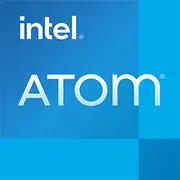Intel Atom x3-3205RK

Intel Atom x3-3205RK: Ultra-Budget Processor for Basic Tasks
April 2025
Architecture and Manufacturing Process: Silvermont at 28 nm
The Intel Atom x3-3205RK processor, launched within the mobile and embedded systems lineup, is based on the outdated Silvermont architecture as of 2025. It is a 4-core CPU with 4 threads (without Hyper-Threading support), manufactured using the 28nm process technology. The cores have a fixed frequency of 1.2 GHz, which limits its performance in resource-intensive scenarios.
The integrated graphics Mali-450 MP4 (4 cores) is a solution from ARM, licensed by Intel. It supports resolutions up to 1080p and can decode videos in H.264 and MPEG-4 formats but struggles with modern codecs like AV1 or VP9. Gaming capabilities are modest: it can run older titles at low settings (e.g., Minecraft or CS:GO at 20-25 FPS).
Features of the Silvermont Architecture:
- Optimized for low power consumption;
- No turbo mode (frequencies do not increase dynamically);
- Support for SSE4.1/4.2 instructions, but lacks AVX.
Power Consumption and TDP: 2 W for Passive Cooling
The processor has a TDP of 2 W, allowing it to be used in fanless devices. This is ideal for compact gadgets:
- Budget convertible laptops;
- Tablets with a keyboard;
- IoT devices and kiosks.
The low thermal output minimizes the risk of overheating even under prolonged load, but limits performance. For example, video rendering or working in Photoshop will be extremely slow.
Performance: Real Tests
Office Work
- Google Docs, Excel: Working simultaneously with 5-10 tabs in the browser plus office applications is possible but with occasional stutters.
- Zoom/Teams: HD video calls load the CPU to 80-90%, resulting in possible image artifacts.
Multimedia
- YouTube 1080p: Smooth playback, but background tasks can cause disruptions.
- Netflix: Supports only basic codecs, 4K content is unavailable.
Gaming
- Light Games: Among Us, Stardew Valley — 30-40 FPS.
- Emulators: PlayStation 1 — stable, Nintendo DS — with limitations.
Usage Scenarios: Who Is the x3-3205RK For?
1. Students — for note-taking, online courses, and working with PDFs.
2. Seniors — user-friendly, long battery life.
3. Secondary Devices — as a supplement to a main PC for travel.
Not suitable for:
- Video editing;
- Modern gaming;
- Working with CAD software.
Battery Life: Up to 12 Hours in Reading Mode
The average power consumption of a system based on the x3-3205RK is 3-5 W (considering the display and memory). With a battery capacity of 40 Wh, this provides:
- 8-10 hours of web browsing;
- 12 hours of eBook reading;
- 6 hours of video playback.
Power-saving Technologies:
- C6 deep sleep mode;
- Dynamic power-off of unused cores;
- Adaptive voltage regulation (DVFS).
Comparison with Competitors
AMD A4-9120C (14 nm, TDP 6 W):
- More powerful Radeon R4 graphics;
- Support for VP9, better video decoding;
- Higher price ($300-$400).
Intel Celeron N4020 (14 nm, TDP 6 W):
- Turbo mode clocking up to 2.8 GHz;
- Compatible with Windows 11;
- Higher TDP, shorter battery life.
Apple A14 Bionic (5 nm, TDP 6 W):
- 3-4 times higher performance;
- Support for neural network tasks;
- Available only in Apple devices (from $500).
Conclusion: The x3-3205RK is the cheapest but also the weakest option.
Pros and Cons
Pros:
- Device prices starting from $200;
- Silent operation;
- Compact size (body thickness from 12 mm).
Cons:
- No support for Windows 11;
- Limited upgrade potential: maximum of 8 GB RAM;
- Outdated ports (often only USB 2.0, micro-HDMI).
Laptop Selection Recommendations
1. Type of Device: Ultrabook or tablet with a keyboard. Examples:
- Lenovo IdeaPad Flex 11 ($229);
- HP Stream 14 ($249).
2. What to Check:
- Presence of SSD (even 64 GB is better than HDD);
- Screen resolution (1080p is recommended, but often it's 1366x768);
- Ports (USB-C for charging is rare).
3. OS: Better to use Linux (Lubuntu, Xubuntu) or Windows 10 LTSC.
Final Conclusion
The Intel Atom x3-3205RK is a processor for those who value battery life and portability over power. It is the ideal choice:
- For schoolchildren and students;
- As a travel device;
- For digital signage solutions.
Key Benefits:
- Price below $250;
- All-day usage without recharging;
- Compatibility with Linux for customization.
If your tasks are limited to browsing and office applications — the x3-3205RK will manage just fine. For everything else, it’s worth looking towards more modern solutions.
Basic
CPU Specifications
Memory Specifications
GPU Specifications
Share in social media
Or Link To Us
<a href="https://cputronic.com/en/cpu/intel-atom-x3-3205rk" target="_blank">Intel Atom x3-3205RK</a>